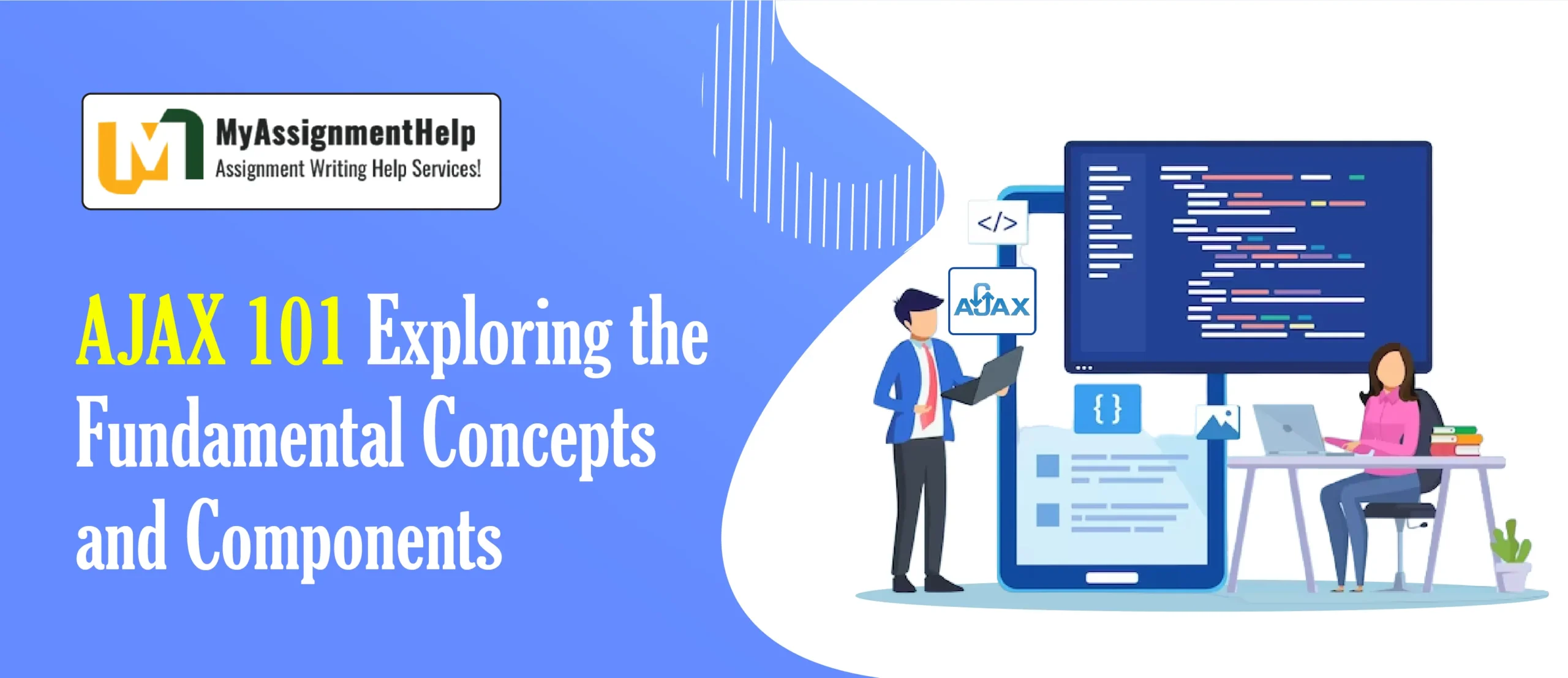In the ever-evolving landscape of web development, AJAX (Asynchronous JavaScript and XML) stands out as a crucial technology that enhances user experiences by enabling seamless, asynchronous data exchange between web browsers and servers. This blog aims to provide a comprehensive understanding of the fundamental concepts and components of AJAX, shedding light on its significance in modern web development. For those seeking to master AJAX, especially students grappling with assignments, we’ll also explore how AJAX Assignment Help can be a valuable resource.

Understanding AJAX: A Brief Overview
AJAX is not a single technology but rather a combination of multiple web development techniques. At its core, AJAX facilitates the exchange of data between the web browser and server without requiring a page refresh. This results in faster, more dynamic, and interactive user interfaces.
Key Components of AJAX
HTML/CSS: The building blocks of web development, HTML and CSS structure the content and style of a webpage. AJAX leverages these foundational technologies to seamlessly integrate dynamic content updates.
JavaScript: AJAX heavily relies on JavaScript for handling asynchronous requests and manipulating the Document Object Model (DOM) to update the webpage without reloading it. JavaScript acts as the engine driving the interactive aspects of AJAX-powered websites.
XMLHttpRequest (XHR) Object: This is the backbone of AJAX. The XHR object is responsible for making asynchronous requests to the server, allowing data to be sent or received without disrupting the user’s experience. Over time, JSON (JavaScript Object Notation) has largely replaced XML for data interchange due to its simplicity and efficiency.
Fundamental Concepts of AJAX
Asynchronous Communication: Unlike traditional web applications, where a user action triggers a complete page reload, AJAX enables asynchronous communication. This means that data can be sent to and received from the server in the background without interfering with the ongoing user interaction.
DOM Manipulation: AJAX dynamically updates the content of a webpage by manipulating the DOM. This allows developers to alter the structure and style of a page based on user actions or data retrieved from the server.
Event Handling: AJAX employs event-driven programming, responding to user actions such as clicks or keypresses. Events trigger the execution of specific functions, enabling dynamic content updates without requiring a full page reload.
AJAX Assignment Help: Navigating Challenges with Expert Assistance
For students grappling with AJAX assignments, seeking professional guidance is a prudent choice. AJAX assignments often involve complex coding, understanding of asynchronous processes, and efficient data manipulation—all of which can be challenging for beginners. Assignment Help services come to the rescue by providing expert insights, clarifying concepts, and offering tailored solutions to ensure academic success.
Why Choose AJAX Assignment Help Online?
Expert Guidance: Qualified professionals with expertise in web development and AJAX are available to provide personalized assistance, ensuring a thorough understanding of the concepts and components.
Timely Delivery: Meeting assignment deadlines is crucial for academic success. AJAX Assignment Help services prioritize timely delivery, allowing students to submit their assignments punctually.
Customized Solutions: Every assignment has its unique requirements. AJAX Assignment Help online offers customized solutions, addressing the specific needs of each student and ensuring high-quality work.
In conclusion, AJAX is a game-changer in modern web development, and understanding its fundamental concepts and components is essential for anyone looking to excel in this field. For students facing challenges in AJAX assignments, seeking expert help ensures not only academic success but also a deeper comprehension of this powerful technology. Embrace the world of AJAX with confidence, knowing that help is just a click away!





